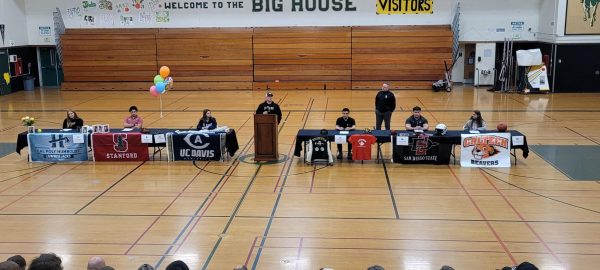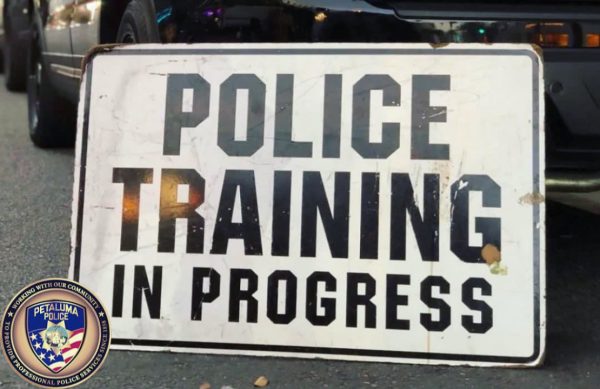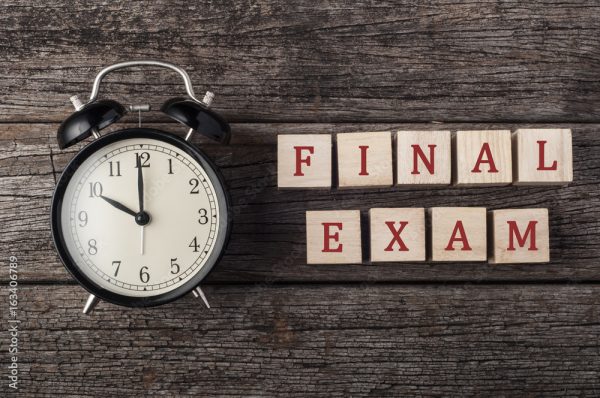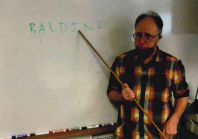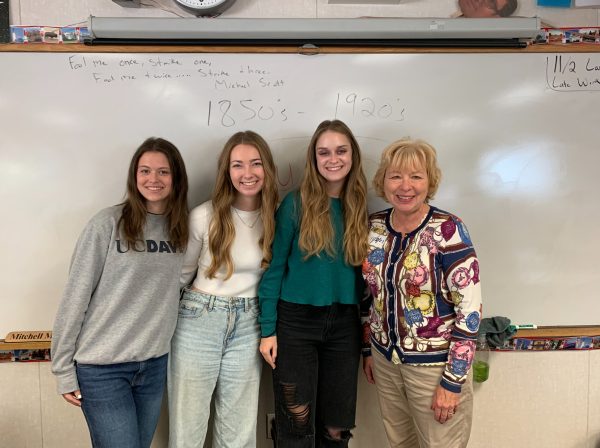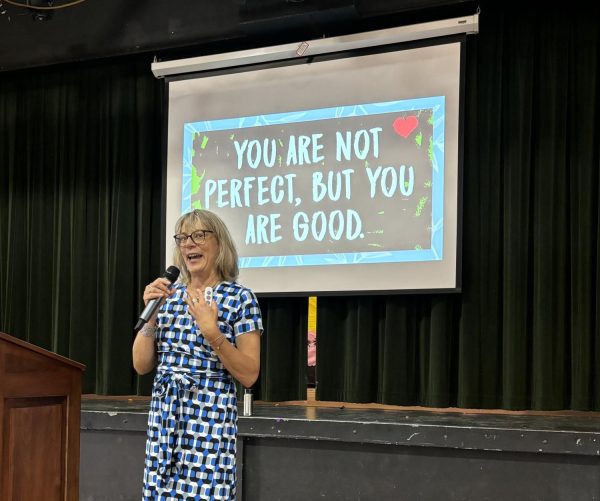Physics
Physics, an upper-level science class taught by Todd Creighton, focuses on three main subjects: energy, forces, and general measurement. Like any college-prep course, this class is full of lectures, notes, and tests; however, Creighton further engages his students by incorporating the topics into hands-on projects.
From egg drops to golf ball launches, the class teaches students how to solve equations on paper, and then apply their knowledge to real world circumstances. Creighton stresses the importance of connecting the topics in the classroom to the physical world outside.
“Physics should be a hands on course in which they’re solving problems, real world problems. You give them the math in class and then allow them to apply it or experiment. You allow them a kind of free-wheeling type of, ‘Here’s a problem, solve it,’ which I think is what these projects really are,” said Creighton.
Junior Michael Quinto, a current physics student, agrees with Creighton’s ideas and is beginning to see how physics applies to everyday life. While he initially enrolled in physics only to fulfill his science credits, Quinto became engaged by the mechanics of the world around him.
“I actually like physics a lot, because most of what we do pertains to real life stuff. It’s interesting to learn about how things work. Like right now, we’re learning how light works. So seeing a painting, that’s just light reflected off of whatever dyes are in the color pencil and it absorbs all the other colors in white light,” said Quinto.
After successfully applying their knowledge to real-world problems, students often become inspired to pursue a career related to physics — and the options are endless. Physics applies to many major job fields: research and development, engineering, education, medicine, and more. Creighton has noticed a tendency for his students to take interest in these pathways, engineering especially.
“I think of physics as a blend between math and engineering. You have to learn the arithmetic, you have to have a problem for which it applies, then this kind of bridges the gap. So a lot of physics students, I’ve noticed especially kids from Casa, go on into engineering in college,” said Creighton.
“The way he does notes is better because you don’t really write down everything yourself, it’s more just filling in the blanks. And then all the demos are fun too. Today we did stuff with black light and lasers, and then he’ll explain why the particles are all together in the light. It’s a pretty hands on class,” said Quinto.



